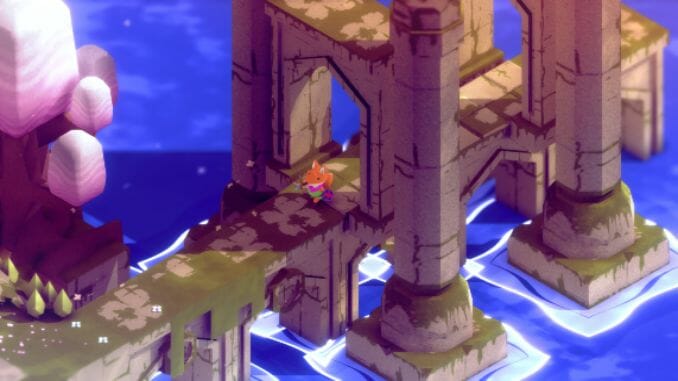Into the Puzzling Unknown with Tunic
Have some spare paper and controllers nearby

In today’s media landscape, it’s rare we are allowed to discover something on our own. Trailers are ubiquitous, often going far out of their way to give potential consumers a run down of nearly the entire movie, TV episode, or videogame in their ever-lengthening runtime. With so many things fighting for your limited time and attention, it’s an understandable if regrettable dilemma to face. Going in without any prior knowledge can easily lead to disappointment, but sometimes it enhances the experience, shattering your expectations and leading to something truly special.
I’ve been lucky enough to have this experience with the recently released Tunic, and you should too. In a perfect world my review would end there: “Don’t listen to a single thing and just play it,” I say, shoving you off the website sticking both thumbs up. But I know that for some people, that isn’t enough; you want to make sure this game is truly worth your time and money, and I do understand. So without really getting into the mushrooms and plums of the game, I’d like to explain to you why Tunic is an experience unlike any other.
Created over the past seven years almost solely by Canadian developer Andrew Shouldice and published by Finji, Tunic yearns to remind players of the golden days of gaming. The action-adventure title will certainly draw comparisons to the Legend of Zelda series, and for good reason: One look at the green-clad fox you control promptly divulges Shouldice’s love for the Nintendo franchise. The adoration stems far beyond a simple outfit homage though—the game’s oblique design evokes the same feelings of wonderment and exploration found in the ‘86 original.
Without so much as a text scroll for context, Tunic drops you into its mysterious world and forces you to roam. Everything you do after waking up on a beach is up to you; although many paths forward present themselves, you often lack the item or ability to use them. Throughout the many hours of play—my playthrough ran around 12-13 hours—a narrative does tease itself out as you gather collectibles and familiarize yourself with the world, but talking about it would be a major disservice to those who want to suss it out for themselves.
That’s the issue with discussing Tunic: the experience is so focused on discovery that spoilers feel more destructive than usual. A lot of my enjoyment came from bumbling around the world until I stumbled onto a secret that, in retrospect, was perfectly obvious. A hidden pathway, a unique combination of items, the blatant solution to a puzzle I had spent valuable minutes and brainpower to solve all produced this euphoric anger within me. A sort of cocktail of “how the hell does someone think this shit up” mixed with “I’m a genius for solving this” with a splash of “I’m an idiot for not getting this sooner.” Everything in the world is meticulously designed around this cycle, creating an addicting loop of puzzle-solving that hooked me more than I would care to admit.
The world feels worn and lived in, the many open treasure chests and broken pathways indicate that you’re not the first explorer to pass through. Enemies litter your path, constantly reminding you that you are an invader in their habitats, a strange fox in a strange land. The dubious trailblazing pairs perfectly with the ethereal and hypnotic score by Lifeformed and Janice Kwan, illustrating the simultaneous grandiosity and intimacy of the journey. The isometric view and diorama-esque design cultivate the sense of running around a toy-box, which uncomfortably juxtaposes with the underlying darkness lurking just out of reach.
-

-

-

-

-

-

-

-

-

-

-

-

-

-

-

-

-

-

-

-

-

-

-

-

-

-

-

-

-

-

-

-

-

-

-

-

-

-

-

-








































